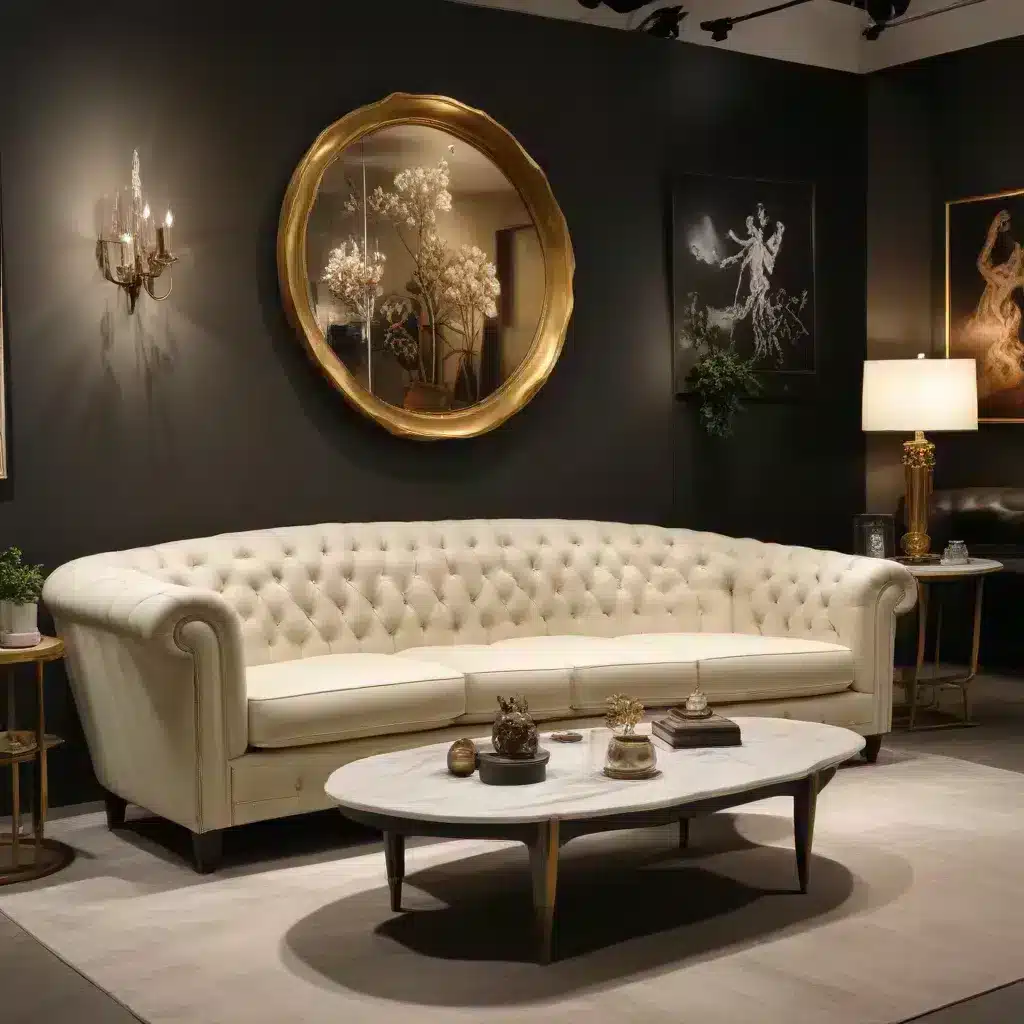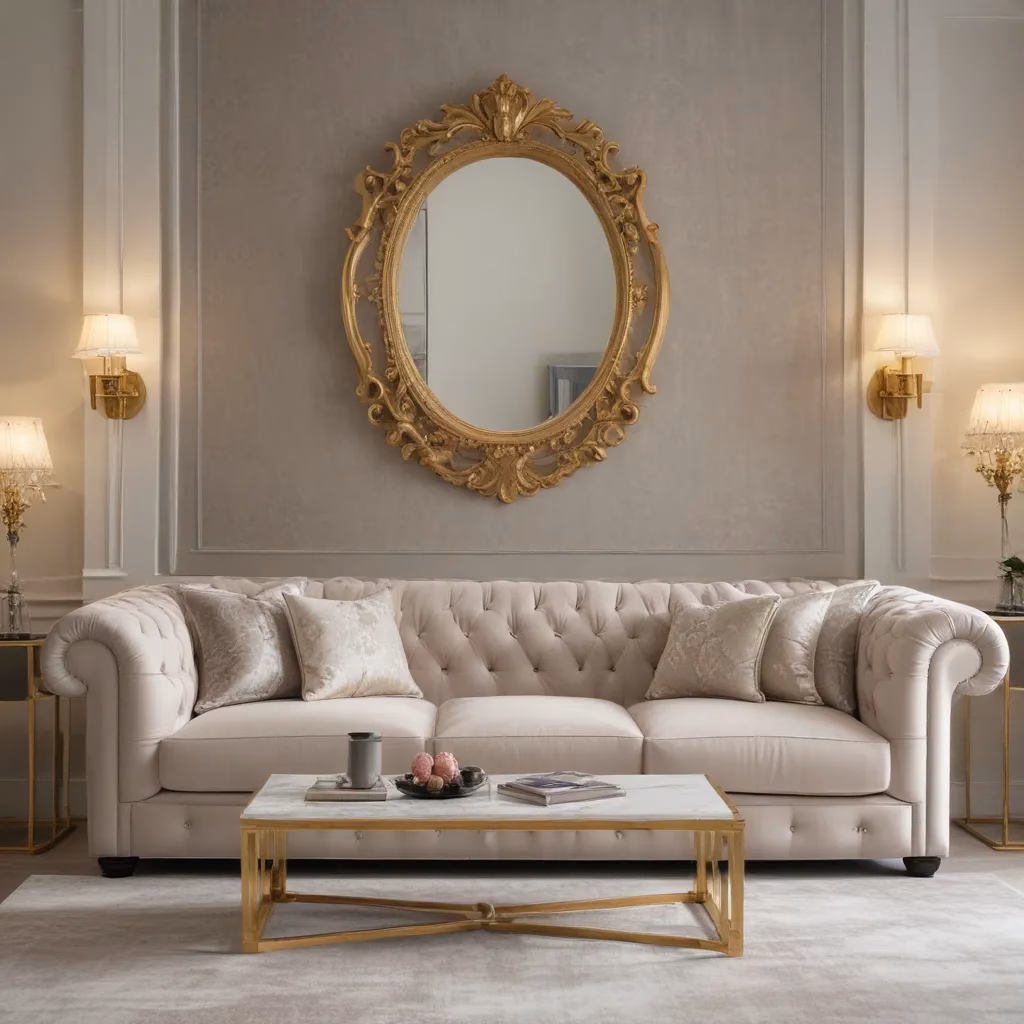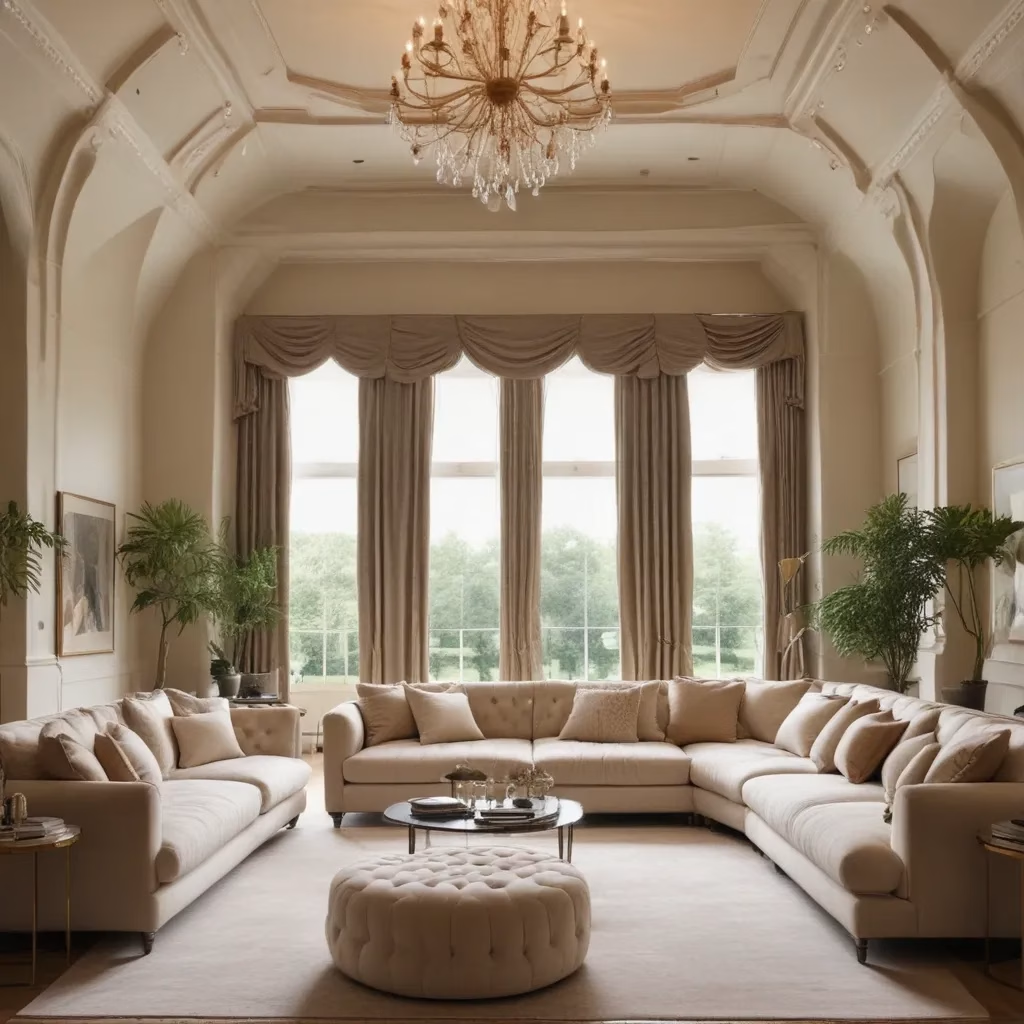
The Evolution of Sofa Design
As a furniture specialist with years of experience, I’ve witnessed firsthand the incredible evolution of sofa design. The industry has come a long way from the simple, functional pieces of the past to the sophisticated, multifunctional works of art we see today.
One of the most striking changes I’ve observed is the shift towards curved and organic shapes. Gone are the days when sofas were just rectangular blocks. Now, we’re seeing flowing lines and asymmetrical forms that not only look stunning but also offer improved ergonomics. These curved designs create a more inviting atmosphere and can make even small spaces feel more open and dynamic.
Another trend that’s caught my eye is the rise of modular sofas. These versatile pieces allow homeowners to customize their seating arrangements based on their needs and space constraints. I’ve worked with clients who’ve transformed their living rooms from formal setups to casual lounging areas simply by rearranging their modular sofa components. It’s a level of flexibility that was unheard of just a decade ago.
Upholstery Innovations: Comfort Meets Durability
In my years of working with furniture, I’ve seen a remarkable advancement in upholstery materials. The focus has shifted from purely aesthetic considerations to a perfect blend of style, comfort, and durability.
Performance fabrics have become a game-changer in the industry. These materials are designed to resist stains, fading, and wear while still feeling soft and luxurious. I remember a client who was hesitant about getting a light-colored sofa because of her young children. We chose a high-quality performance fabric, and years later, her sofa still looks as good as new, despite the countless spills and accidents.
Eco-friendly options have also gained traction. I’ve noticed an increasing number of clients asking for sustainable materials. From recycled polyester to organic cotton and even fabrics made from reclaimed plastic bottles, the options are expanding. These materials not only appeal to environmentally conscious consumers but often bring unique textures and patterns to sofa designs.
Leather alternatives have come a long way too. I’ve been impressed by the quality of some faux leather options that are virtually indistinguishable from the real thing. These materials offer the luxurious look of leather without the ethical concerns, and often at a more accessible price point.
Smart Technology Integration in Sofas
The integration of technology into furniture has been one of the most exciting developments I’ve witnessed in recent years. Smart sofas are no longer a futuristic concept – they’re here, and they’re changing how we interact with our living spaces.
I recently worked with a tech-savvy client who wanted a sofa that could do more than just provide seating. We found a model with built-in USB charging ports and wireless charging pads. It’s amazing how such a simple addition can make a sofa the central hub of a living room, eliminating the need for unsightly cords and adapters.
Some high-end sofas now come with adjustable lumbar support and reclining features that can be controlled via smartphone apps. I’ve seen how these features can transform the comfort level for users, especially those with back problems or mobility issues.
Climate control is another area where technology is making waves in sofa design. I’ve come across sofas with heating and cooling functions built into the seats. While these are still relatively rare, I believe we’ll see more of this technology in the coming years, especially in luxury markets.
The Art of Sofa Placement
Over the years, I’ve learned that the perfect sofa can still fall short if it’s not placed correctly in a room. The art of sofa placement is crucial in creating a harmonious and functional living space.
One principle I always share with my clients is the importance of traffic flow. A sofa should never obstruct the natural pathways in a room. I once worked with a family who had a beautiful, large sectional but had placed it in a way that forced everyone to awkwardly maneuver around it. By simply rotating the sofa 90 degrees, we opened up the space and made the room feel twice as large.
Another key consideration is the focal point of the room. In many cases, this might be a fireplace or a large window with a view. I advise positioning the sofa to face this focal point, creating a natural and inviting arrangement. However, in rooms where the TV is the primary focus, it’s important to balance viewing angles with conversational groupings.
Lighting is another factor that’s often overlooked in sofa placement. I always recommend considering both natural and artificial light sources. Placing a sofa near a window can create a lovely reading nook, while ensuring adequate lighting for evening use is equally important for comfort and functionality.
Maintenance Tips for Long-lasting Sofas
As someone who’s seen countless sofas through their lifecycle, I can’t stress enough the importance of proper maintenance. A well-cared-for sofa can last for decades, retaining both its comfort and aesthetic appeal.
Regular vacuuming is the foundation of good sofa care. I advise my clients to vacuum their sofas at least once a week, paying special attention to the crevices where crumbs and dust accumulate. For fabric sofas, using the upholstery attachment is crucial to avoid damaging the material.
Rotation is another simple yet effective maintenance tip. Just like with mattresses, regularly rotating sofa cushions helps distribute wear evenly. I suggest flipping and rotating cushions monthly for optimal results.
For leather sofas, conditioning is key. I recommend using a quality leather conditioner every 6-12 months to keep the leather supple and prevent cracking. However, it’s important to use products specifically designed for the type of leather your sofa is made from.
Addressing spills immediately is crucial for all types of sofas. I always tell my clients to blot (never rub) spills as soon as they happen. For tougher stains, it’s best to consult the manufacturer’s guidelines or a professional cleaner to avoid damaging the fabric.
The Psychology of Color in Sofa Selection
In my experience, the color of a sofa can have a profound impact on the mood and atmosphere of a room. It’s not just about aesthetics; color psychology plays a significant role in how we perceive and interact with our living spaces.
Neutral colors like beige, gray, and white remain popular choices for sofas, and for good reason. These colors provide a versatile backdrop that can easily adapt to changing decor trends. I’ve had clients who’ve kept the same neutral sofa for years, simply updating the look with new throw pillows and accessories.
However, I’ve also seen a growing trend towards bolder color choices. Deep blues and greens can create a sense of calm and sophistication, while vibrant reds or yellows can inject energy and warmth into a space. I worked with a client who chose a rich emerald green velvet sofa for her living room, and it completely transformed the space from ordinary to extraordinary.
When advising on color selection, I always consider the room’s overall color scheme and lighting. A color that looks perfect in a showroom might appear completely different in a client’s home due to differences in natural and artificial lighting.
Sustainable Practices in Sofa Manufacturing
Sustainability has become a major focus in the furniture industry, and I’ve been thrilled to see the innovative approaches manufacturers are taking to reduce their environmental impact.
One area where I’ve seen significant progress is in the use of sustainable materials. Many manufacturers are now using recycled or rapidly renewable materials in their sofa frames. For example, bamboo, which grows much faster than traditional hardwoods, is becoming a popular choice for sofa frames.
Eco-friendly upholstery options have also expanded. I’ve worked with fabrics made from recycled plastic bottles that are incredibly soft and durable. Natural fibers like organic cotton and hemp are also gaining popularity, especially among environmentally conscious consumers.
The manufacturing process itself is also becoming more sustainable. I’ve visited factories that use solar power and have implemented water recycling systems. Some manufacturers are even adopting a zero-waste approach, finding creative ways to repurpose or recycle every scrap of material.
The Role of Customization in Modern Sofa Design
Customization has become a key trend in the sofa industry, and it’s one that I’ve embraced wholeheartedly in my work with clients. The ability to tailor a sofa to specific needs and preferences has revolutionized the buying process.
One of the most exciting aspects of customization is the ability to choose from a wide range of fabrics and finishes. I’ve worked with clients who have selected everything from luxurious velvets to performance fabrics that can withstand the wear and tear of family life. This level of choice allows for a truly personalized piece that fits perfectly with the client’s lifestyle and decor.
Size customization is another area where I’ve seen significant advancements. Many manufacturers now offer sofas in a range of sizes, or even allow for custom dimensions. This has been a game-changer for clients with unique space requirements or those looking for the perfect sectional to fit their room layout.
Modular designs have taken customization to the next level. I’ve helped clients create sofas that can be easily reconfigured to suit different needs – from intimate seating for two to expansive arrangements for large gatherings. This flexibility is particularly valuable in today’s multifunctional living spaces.
The Future of Sofa Design: Trends to Watch
As we look to the future, I’m excited about the innovative trends emerging in sofa design. Based on what I’ve seen at recent trade shows and in conversations with industry leaders, here are some developments I believe will shape the future of sofas.
3D-printed components are starting to make their way into sofa manufacturing. This technology allows for intricate designs and custom shapes that were previously impossible or prohibitively expensive to produce. I expect we’ll see more unique, sculptural sofa designs as this technology becomes more widespread.
Augmented reality (AR) is set to revolutionize the sofa buying experience. I’ve already used AR apps that allow clients to visualize how a sofa will look in their space before making a purchase. As this technology improves, I believe it will become an integral part of the design and selection process.
Biophilic design principles are influencing sofa shapes and materials. I’m seeing more organic forms and nature-inspired textures in sofa design. This trend aligns with the growing desire to bring elements of the natural world into our indoor spaces.
Conclusion: The Sofa as a Centerpiece of Home Design
As we’ve explored throughout this article, the world of sofa design is rich with innovation, sustainability, and personalization. From smart technology integration to eco-friendly materials, the possibilities for creating the perfect sofa are more exciting than ever.
At Sofa Spectacular, we’re committed to staying at the forefront of these trends, offering our clients the latest in sofa design and technology. Whether you’re looking for a customized piece that perfectly fits your space or a sustainable option that aligns with your values, we’re here to guide you through the selection process.
Remember, a sofa is more than just a piece of furniture – it’s the heart of your living space, a place where memories are made and comfort is paramount. By choosing wisely and maintaining your sofa properly, you can ensure it remains a beloved part of your home for years to come.
As we continue to see advancements in materials, technology, and design, the future of sofas looks brighter than ever. I, for one, can’t wait to see what innovations the next decade will bring to this essential piece of furniture.



